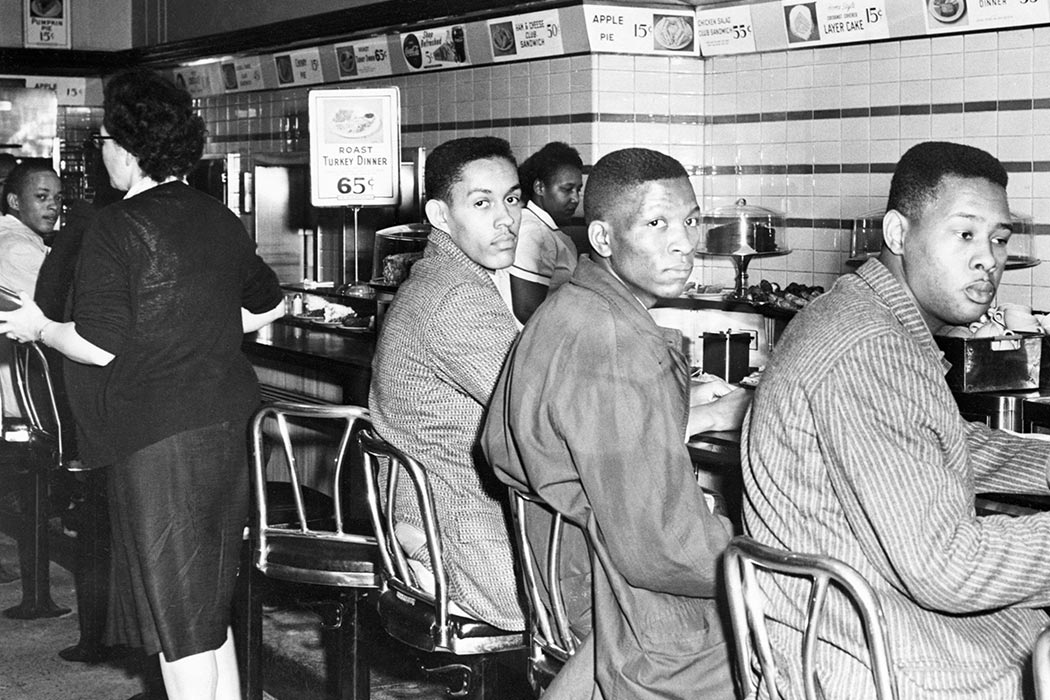There’s a new protest movement afoot at U.S. universities. As students demand an end to racism on campus and various civil rights movements gain steam across the country, nonviolent protests are again in the news. But could those protests be viewed through the lens of dance? In a 2003 paper for the Theatre Journal, choreographer and scholar Susan Leigh Foster weighed in.
Foster examined the physical “choreographies of protest,” asking how and when bodies protest. In the past, she wrote, the body’s role in physical protests had been minimized and dismissed. She examined the body’s role in three nonviolent protests: lunch counter sit-ins of the 1960s Civil Rights Movement, ACT-UP die-ins staged by AIDS activists in the late 1980s, and the protest of the World Trade Organization meeting in Seattle in 1999.
“I do not intend to read these events as dances,” wrote Foster, noting that to do so would divorce them from their contexts and the intentions of the protesters. Nonetheless, she argued, looking at protest through the lens of dance allows scholars to understand how protesters enact, theorize, and construct their objections.
For example, the Greensboro sit-in of February 1960 showed that protestors had carefully analyzed which racial line would be effective to cross. By remaining completely passive throughout various forms of harassment, they were able to maintain “the moral political superiority of appearing in control rather than out of order”—a control that made the protests noteworthy, emotionally effective, and relatable. By refusing to move, the protesters “exerted a subtle control over everyone’s actions.”
Foster also examined the body during the AIDS die-ins held in Manhattan during the 1980s. By piling their “dead” bodies close to one another and refusing to move their heavy limbs, protesters made it hard for police to arrest individuals. “Exacting two, three, or four policemen to disperse each protester, the die-ins drained state resources, but they also resonated with meaning beyond mere non-compliance,” she wrote. By behaving as if dead, protesters not only used their bodies to obstruct potential police action: They brought the issue of death front and center for observers.
At the WTO convention in Seattle in 1999, protesters used their bodies to convey solidarity. By forming human chains and mobile blockades, they created and reinforced the connection of diverse interest groups.
Foster concludes that “bodies work with what is at hand,” interacting with and learning from other bodies during moments of protest. By using the body to resist and respond to violence and social injustice, protesters literally embody their cause. Perhaps, she wrote, the body’s creation and experience of agency through the physical act of protest is what makes the concept of a political “movement” so powerful.







